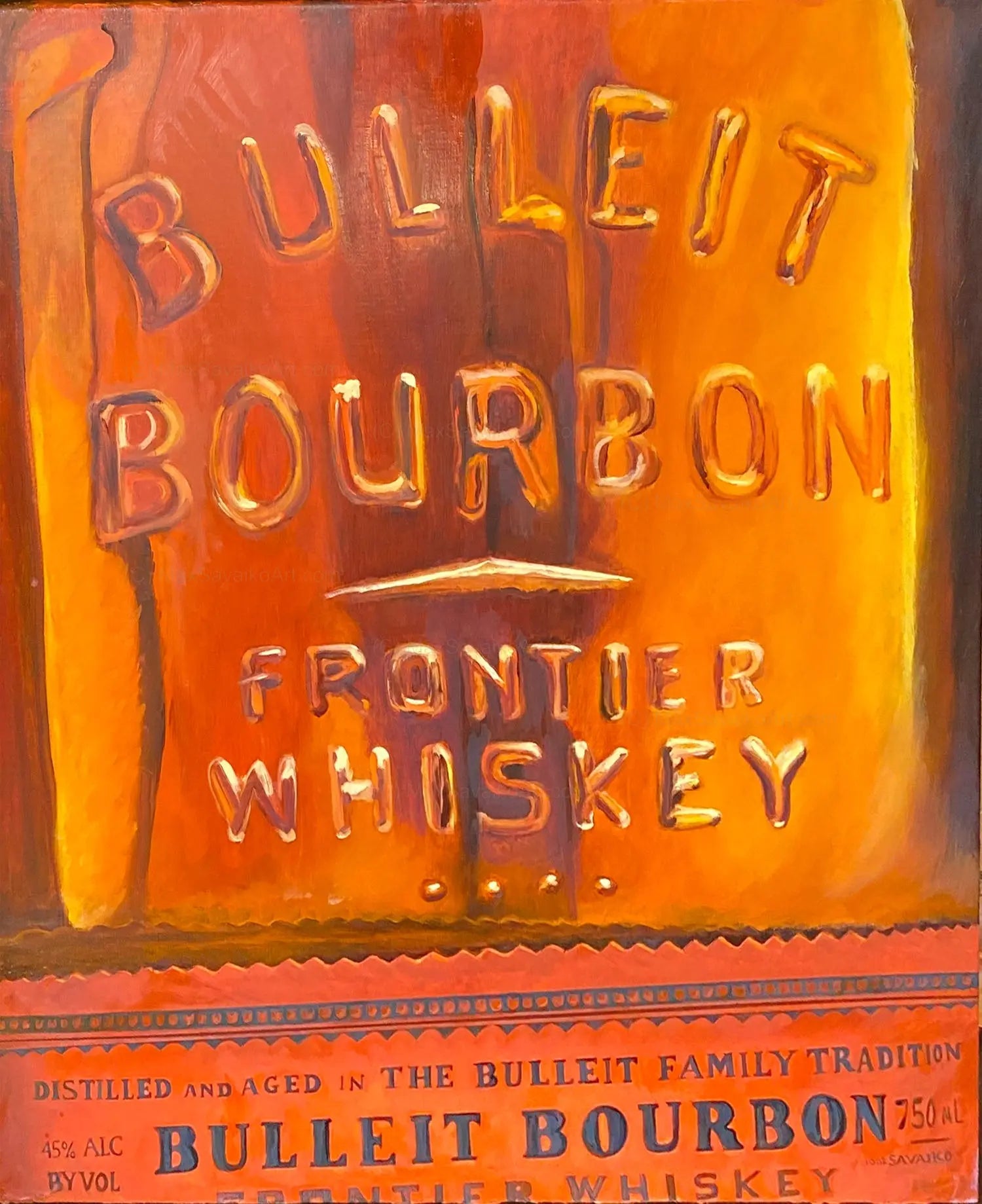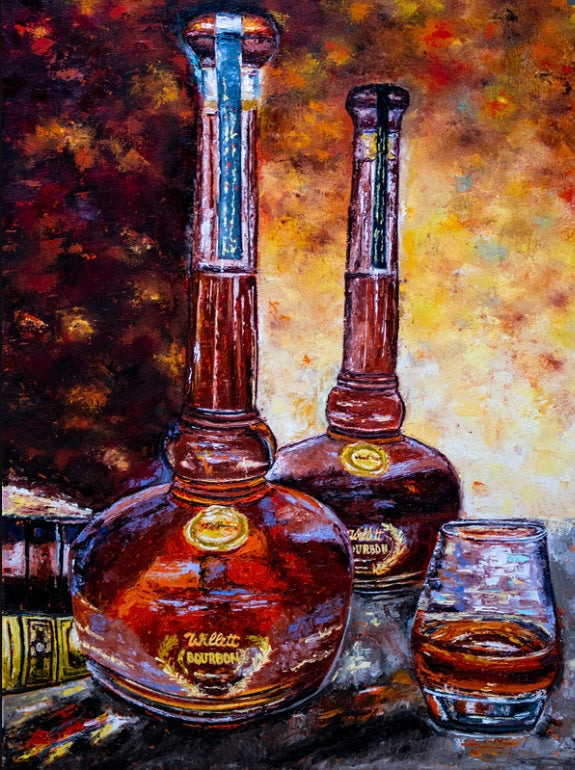Transform Your Area with Spectacular Whiskey Art Inspired by Nature
Wiki Article
Capturing the Essence of Whiskey Art Through One-of-a-kind Aesthetic Representations and Styles
The art of bourbon expands past the fluid itself, showing up with a selection of visual representations that encapsulate its fabled heritage and workmanship. What stays to be revealed is just how these developing styles show not only the whiskey itself yet likewise the altering landscape of artistic analysis. Realism Art.The Background of Bourbon Art

As scotch manufacturing spread, so as well did the desire to elevate its experience via art. From the intricate engravings on very early barrels to the sophisticated tags of contemporary containers, each component reflects an one-of-a-kind creative vision, functioning as a visual narrative of the bourbon's heritage.
In the 18th and 19th centuries, the rise of the industrial transformation even more improved scotch art, leading to cutting-edge product packaging and advertising that recorded customer attention. Artists and designers started experimenting with looks, imbuing whiskey-related images with symbolic meanings that communicated ideas of craftsmanship, tradition, and area.
Today, bourbon art continues to develop, blending typical methods with contemporary art forms. Realism Art. This ongoing dialogue in between the spirit and its aesthetic depiction emphasizes the enduring bond in between bourbon and culture, improving the overall experience for enthusiasts worldwide
Iconic Bottle Styles
While several elements add to the attraction of bourbon, iconic bottle layouts play a crucial function in forming customer assumption and boosting the general experience. The aesthetic presentation of whiskey bottles is not simply a visual consideration; it acts as a bridge between the item and the consumer, evoking feelings and setting assumptions.Distinct forms, materials, and closures can raise a whiskey brand's identification, making it instantaneously identifiable on crowded shelves. For example, the timeless Glenfiddich container, with its stylish tapered silhouette, conveys a sense of practice and workmanship, while the strong, modern design of the Balvenie container shows technology and sophistication. The usage of colored glass or one-of-a-kind appearances can recommend the quality and character of the scotch within.
Famous styles commonly incorporate elements of cultural heritage, representing the brand name's background and connection to its roots. Brands like Jack Daniel's use a simple, durable style that resonates with its American bourbon heritage. Inevitably, the influence of bottle design prolongs beyond plain capability; it encapsulates the essence of the brand, welcoming consumers to explore and delight in the abundant tapestry of scotch culture.
Label Art Work and Branding
Bottle styles often establish the stage for what consumers can anticipate, however tag art work and branding play an equally significant function in connecting a bourbon's identification. The label works as the very first point of get in touch with in between the item and the consumer, encapsulating the essence of the scotch within its aesthetic elements.Efficient label artwork incorporates typography, images, and color to develop a story that reverberates with the brand name's heritage and target market. A label including vintage font styles and complex images might stimulate a sense of practice and craftsmanship, appealing to aficionados. In contrast, strong shades and modern-day style elements could draw in a more youthful group seeking development and excitement.


Digital Photography and Visual Narration
Recording the significance of bourbon with photography and visual narration is an art type that elevates the brand experience. This tool transcends plain product depiction, delving right into the complex narratives that border each container. By utilizing engaging imagery, photographers can evoke feelings that reverberate with customers, inevitably forging a much deeper connection to the whiskey brand.Visual storytelling in scotch photography typically utilizes abundant textures, lighting, and composition to highlight the distinct qualities of the spirit. The interaction of light and darkness can highlight the brownish-yellow tones of bourbon, while the selection of history aspects-- such as rustic barrels or sophisticated glasses-- can strengthen the brand name's heritage or way of living associations.
Moreover, recording the ritualistic elements of bourbon consumption, from the pouring to the sampling, invites audiences right into a sensory experience, allowing them to picture the flavors and scents that await. Each photograph not just showcases the item however likewise narrates of workmanship, practice, and the moments that whiskey can boost - Bourbon Art. Hence, photography comes to be an effective tool in expressing the identity of scotch brands, positioning them within the more comprehensive social landscape
Arising Fads in Scotch Art
The development of whiskey art is progressively formed by modern patterns that reflect broader societal changes and consumer choices. This shift not just highlights the value of sustainability but also improves the narrative surrounding scotch manufacturing.Additionally, digital art has risen in appeal, permitting ingenious depictions of bourbon. Artists are leveraging innovation to craft immersive experiences, such as augmented fact installations that involve audiences and offer a deeper understanding of bourbon's cultural relevance. This trend likewise extends to social media sites platforms, where aesthetically striking web content garners interest and promotes neighborhood among fanatics.
Moreover, collaborations in between scotch brands and artists are coming to be more prevalent. These partnerships produce limited-edition packaging styles and exclusive art work that commemorate both the workmanship of scotch and the creative thinking of musicians. As scotch art continues to advance, these emerging patterns will definitely form its future, fostering a vibrant crossway of society, sustainability, and technology within the whiskey area.
Final Thought
In verdict, the art of whiskey encompasses a diverse variety of graphes that reflect its abundant heritage and craftsmanship. From renowned container layouts and elaborate label artwork to engaging digital photography, each aspect contributes to a Whiskey Art wider narrative that enhances the customer's experience. As emerging fads, such as electronic art and sustainability, remain to form this artistic landscape, the diverse identification of bourbon remains a sustaining resource of social connection and expedition.

In conclusion, the art of scotch includes a varied selection of visual depictions that show its abundant heritage and workmanship.
Report this wiki page